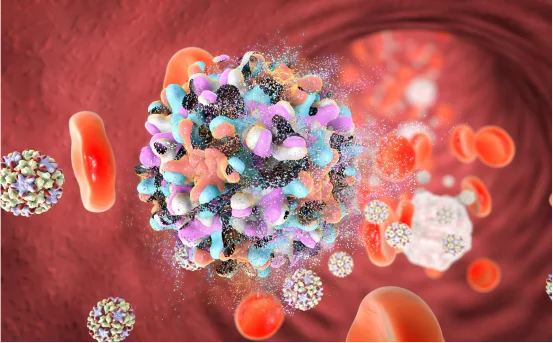Hepatitis C is a viral infection that primarily affects the liver, often going unnoticed for years before any symptoms appear. As a major cause of chronic liver disease, cirrhosis, and even liver cancer, Hepatitis C has gained global attention in the field of infectious diseases. Understanding the causes of Hepatitis C is essential not only for prevention but also for reducing the risk of long-term health complications.
Understanding the causes of Hepatitis C is essential for early diagnosis, effective treatment, and most importantly, prevention. Unlike other forms of hepatitis, Hepatitis C is primarily spread through direct contact with infected blood. However, many people remain unaware of how easily the virus can be transmitted through certain everyday practices or medical exposures. From sharing needles to receiving blood transfusions before routine screenings became standard, the routes of transmission are more common than most people realize.
What is Hepatitis C?
Hepatitis C is caused by the Hepatitis C virus (HCV), a bloodborne pathogen that leads to liver inflammation and potential liver damage. It’s often referred to as a “silent” disease because many people who contract the virus don’t show symptoms until the liver has been significantly affected. In most cases, Hepatitis C starts as an acute infection and may progress to a chronic condition if left untreated.
The Main Cause: The Hepatitis C Virus (HCV)
The sole direct cause of Hepatitis C is infection with the Hepatitis C virus (HCV). Once the virus enters the bloodstream, it targets liver cells, leading to inflammation and disruption of normal liver function. There are several genotypes of the virus, and although all genotypes can cause liver disease, treatment responses may vary depending on the specific strain.
While the virus itself is the main cause, understanding how it enters the body is crucial to understanding how Hepatitis C is spread and who is at risk.
Causes of Hepatitis C
- Blood-to-Blood Contact
The most common mode of HCV transmission is direct exposure to infected blood. Even a small amount of infected blood can carry enough viral load to cause infection. This makes any activity involving exposure to blood a potential risk factor for Hepatitis C transmission.
- Injection Drug Use
One of the leading causes of Hepatitis C globally is sharing needles or syringes during recreational drug use. People who inject drugs and share equipment are at a significantly higher risk of contracting the virus, especially in communities where clean needles are not readily accessible.
- Unsafe Medical Practices
In some parts of the world, unsafe medical practices contribute to the spread of Hepatitis C. This includes reusing medical equipment like needles, syringes, and surgical tools without proper sterilization. In healthcare settings with inadequate infection control, patients may unknowingly be exposed to HCV.
Other Common Risk Factors and Causes of Hepatitis C
While blood contact remains the most common cause of HCV transmission, several other factors can increase a person’s risk :-
- Blood Transfusions Before 1992
Before widespread screening began in the early 1990s, blood transfusions and organ transplants were a significant cause of Hepatitis C. In many countries, blood products were not routinely screened for HCV until 1992, placing recipients of blood products before this time at elevated risk.
- Hemodialysis for Kidney Failure
Patients undergoing long-term hemodialysis may face a higher risk of exposure to Hepatitis C due to potential contact with contaminated blood or equipment, particularly in facilities with substandard hygiene practices.
- Tattoos and Body Piercings
Getting a tattoo or body piercing in an unregulated or unhygienic environment can lead to Hepatitis C infection. The use of non-sterile equipment or ink contaminated with infected blood poses a transmission risk.
- Occupational Exposure in Healthcare
Healthcare professionals, especially those working in emergency or surgical settings, may accidentally sustain needle-stick injuries or be exposed to infected blood during medical procedures. Although the risk is relatively low, such incidents remain a recognized cause of Hepatitis C transmission.
Sexual Transmission: Less Common, But Possible
While not as common as other transmission routes, sexual transmission of Hepatitis C can occur, especially among individuals with multiple sexual partners, those who engage in unprotected sex, or those who already have a sexually transmitted infection (STI). The risk is also higher among men who have sex with men, particularly if HIV is present.
Transmission from Mother to Child
Another possible cause of Hepatitis C infection is perinatal transmission, where the virus is passed from a Hepatitis C-positive mother to her baby during childbirth. Although relatively uncommon, it does happen in a small percentage of cases. The risk increases if the mother has a high viral load or is co-infected with HIV.
Sharing Personal Items
Items that may come in contact with blood or open wounds, such as razors, toothbrushes, or nail clippers, can also be a source of infection if they are shared between people. Although the risk from these items is relatively low compared to other causes, it is still a possible route of transmission.
Rare Causes of Hepatitis C
In some rare cases, the exact cause of infection may remain unknown. Individuals with no identifiable risk factors may still contract the virus, possibly due to :-
-
Unrecognized exposure during a medical procedure
-
Community transmission in areas with poor sanitation or medical oversight
-
Unknown sexual transmission events
These rare cases underscore the importance of routine screening and awareness, especially for those who fall into higher-risk categories.
Myths About Hepatitis C Transmission
It’s important to debunk some common myths surrounding how Hepatitis C is spread. HCV is not transmitted through :-
-
Coughing or sneezing
-
Casual contact such as hugging or shaking hands
-
Sharing food, utensils, or drinks
-
Breastfeeding (unless the nipples are cracked or bleeding)
Clearing up these misconceptions helps reduce the stigma often associated with the condition and encourages more people to get tested and seek treatment.
Conclusion
Understanding the causes of Hepatitis C is the first step toward effective prevention. Since the virus is primarily transmitted through blood-to-blood contact, avoiding risky behaviors such as sharing needles, ensuring medical safety, and practicing safe sex are key preventive strategies.























